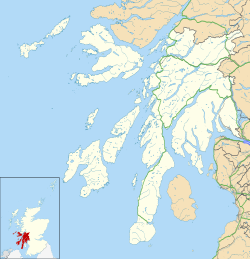| Croggan | |
|---|---|
 | |
Location within Argyll and Bute | |
| OS grid reference | NM705272 |
| Council area | |
| Lieutenancy area | |
| Country | Scotland |
| Sovereign state | United Kingdom |
| Post town | ISLE OF MULL |
| Postcode district | PA63 |
| Police | Scotland |
| Fire | Scottish |
| Ambulance | Scottish |
| UK Parliament | |
| Scottish Parliament | |
Croggan is a small scattered settlement on the Loch Spelve sea loch, in the south of the Isle of Mull, Argyll and Bute, Scotland. [1] It is located in the Torosay parish. There is a beach. [2]
Contents
The nearest village is Lochbuie.

